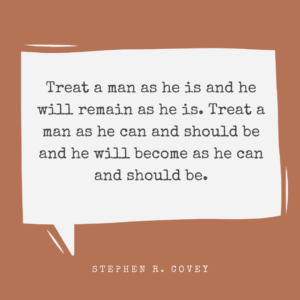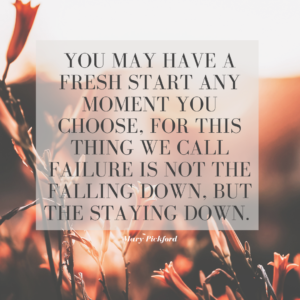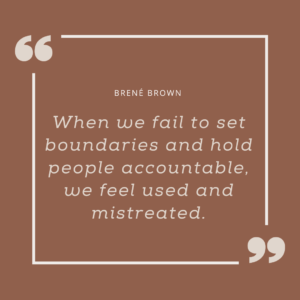
What can you do to sustain your love of teaching?
In this post, I’m going to share with you my top 9 tips for sustainability in teaching. I’m not talking about how to teach about environmentally friendly practices, although that would be amazing. This is a post about what you can do to make sure you continue teaching with love and passion even after the—sorry to be harsh—idealism wears off.
At this point, I’ve made it past the five year curse. Yes, there is a curse… or at least a demoralizing statistic. According to the US Department of Education in 2012, nearly 50 percent of teachers leave the field after five years. There is debate about this number, as discussed in this article here, which references another study that cites 17 percent of teachers leave the field after five years. Sure, this is a huge difference in the statistics, but the numbers still speak to deep issues. Further, this concern isn’t isolated to the USA, according to a 2019 Forbes article, a study in England found that nearly one in six teachers left the teaching sector after their first year.
This is disheartening.
If you’ve put in the time, energy, and money to become a teacher, then you probably don’t want to consider that you’ll want to leave the field within five year… before you even pay off your student loans.
The first year of teaching, and even to an extent the second, is about surviving. These years are about finding ways to make it through a day and at the end of it feel like your brain can still function. All of your energy and time goes into just making it through a day.
I don’t know that anyone can prepare you for how mentally and emotionally consuming teaching truly is.
Although this makes teaching sound awful and hopeless–it’s not. You’re reading this because you know teaching is rewarding and exciting and awesome. But, how can you make sure you can keep coming back? How can you avoid the famed “teacher burnout” or surpass the “five year curse”?
After seven years, I finally feel like I have a handle on loving my chosen path of teaching and loving my personal life. I’ve learned quite a bit. So, let’s just get into it. Here are my 9 tips to help you continue teaching and loving it.
Tip #1 – Find your people!
My first year of teaching was undoubtedly the hardest (I will say this year, 2020-2021 is in close second, for sure).
After my very first day with students, I still remember walking into my house, sitting down on my couch, and promptly bursting into tears. All I could think was, “what the hell have I done.” Although I was prepared in most ways, student teaching and my credentialing program did not prepare me for the emotional onslaught that is teaching.
But, even though trying, my first year was also the year I had the best support system. And that, in short, is tip number one. Find your people. Build your team.

Luckily, throughout my training I networked with fantastic, supportive, and passionate teachers. During my first year, I was still in contact with my master teacher, who remains a great mentor. Whenever I have a pedagogical question, I ask her. I also had an amazing department chair and an equally amazing grade-level lead. I clung to them. They were part of my team, and they didn’t even have to try out. Hopefully they didn’t find me annoying, but seriously, I was superglue to them. They helped me keep, and occasionally regain, my sanity.
You need a team to support you. On the days when a student challenges you, and you don’t know how to react; when you look at your pile of work to grade and realize you’ll never reach the bottom; after a flop of a lesson, that is when you need your people the most. They will give you perspective and moral support. Plus, if you choose the right people, they’ll also give you the truth: apologize when you react poorly, throw that stack of work away, and simplify and reteach.
The point of this is you need to find people who support you in your teaching, rather than belittle it.
Maybe you’re in a unique situation and you’re thinking, “Well, I’ve tried to find ‘my people,’ but I don’t align or mesh with anyone at my school site! What then?!” I hear you. Sometimes we don’t agree on a pedagogical level with our colleagues, and that presents a problem when you’re trying to build your educator network and support team. My solution? The internet.
While I agree there are steep costs to the age of the internet and 24/7 plugged-in status, the benefits exist, and we should reap what we can. Namely, in this case, teacher-friends. Find your people online. This could mean, if you’re a friendly or brave soul, reaching out and forming relationships with these teachers. Or, if you’re a bit of a hermit like me, to begin with you can follow these fellow teachers online (thank you social media!).
Regardless of how you find your people, you must find people who you can go to, either literally or digitally, for inspiration and guidance, for hope when you most need it.
Tip #2 – Identify your strength and passion, and commit
People become teachers for various reasons. When asked why they chose this path, teachers often share some common threads:
“I had really great teachers who inspired me. I want to do that for kids.”
“I didn’t have any good teachers/I had a horrible teacher, and I want to be someone my students can look to for help and support.”
“I love learning, I love [subject], and I want to share this with others.”
These are the typical motivations for entering the teaching field. And though these are great motivators, there needs to be more to sustain you throughout your years as a teacher, to ward off the dreaded teacher burnout.
You have to find your strength and your passion. And give it your all.
How do you know what you’re passionate about? Well, Robert Fried (2001), who has a fantastic book on teaching and learning, suggests teachers need passion, and there are three main passions: passion for your subject, passion for working with young people (your students), and passion for issues facing the world. (I go into Fried’s ideas more in another post, so check that out.)

If you are passionate about your subject, dig into that. Research and investigate and invent, or reinvent, curriculum to excite and engage your students. Share your love and excitement for your subject with your students. Even if it scares them.
If you are passionate about working with young people, delve into that. Delve into the challenges and problems they face and figure out how you can help them confront them. Design time to work with students one-on-one. Work with counselors and other teachers to tag-team the challenging students who need the most support.
If you are passionate about the issues facing our world, show your students how to dive in. Talk to them about social justice issues and initiatives in which you believe in and to which you belong. Help students celebrate cultural diversity authentically. Create time and space in your classroom to talk about authentic and present issues in the world that impact your students… you get the idea.
It would be great if you loved all these, but I don’t think we can love them all equally. We have a true strength, or a consuming passion, for one of these. Let that be where you put your focus and energy. I’m not saying to ignore everything else, to let anything else suffer. You need to be an effective and compassionate teacher, but your students need more than a body in the room who gives them worksheets and high fives. More importantly, you need more than that.
You have to figure out what you love about teaching, and that passion, that continued development of the skills necessary to successfully fulfill that passion, that will sustain you, so you can continue teaching.
Tip #3 – Observe, observe, observe. Then try it.
There are designated times when you observe other teachers during a credential program. As a full-time teacher, those mandated occasions disappear, but the reasons and need to observe other teachers do not dissipate.
Before we get too far into this tip, the practice of observing does need clarification. Observation does not mean merely studying or watching; rather, it goes further. There is a depth to observation: you perceive, you regard with attention, you seek to learn. It is not a box to tick. It is an investment in development.
You need to make time to observe other teachers. Ideally, really awesome teachers.
I’m not exaggerating when I say I spent many of my first year’s prep periods in my grade level leader’s classroom. I wanted to see her teach and engage and interact with students.
Through watching her teach the lessons I soon needed to teach, I learned different ways to approach the material, to explain the instructions, to demand students step up to the plate. In observing her engage and interact with students, I saw another way to form relationships and handle students with different needs and personalities. Regardless of the differences, I could find ways to use the same skills and tactics and make them true to me.

Much like our students, we learn through observing, and even moreso by then doing.
If you’re a new teacher, or even a veteran teacher, observation and testing out different strategies invigorates or reinvigorates your teaching. If you can’t find the time to go into someone else’s classroom, (but seriously, can you find five minutes?), then find teachers to watch through organizations like TeachingChannel and Edutopia.
The key here is to not only observe, but to learn through that observation or research and put those ideas and strategies into your own practices.
Observe, observe, observe, and then apply.
Tip #4 – Find and listen to your gut.
Maybe this seems silly, but my gut and I… we were strangers until I trained as a teacher. I’m talking about the gut feeling you get when there’s an emotional shift in the room. Admittedly, I’m an observer, but not a very good empath… Until I became responsible for other human beings, I never realized how much it could help call attention to moments of shift, moments where you need to step in.
Whatever the case may be, you need to develop your gut. There are things your students will do or say that you won’t understand. It’s inevitable, but you can and should feel what’s happening. Do not overlook those feelings.
You know that feeling in your stomach, or when your chest gets warm, because something just happened, even if invisible, that changed the entire feeling in the room? You don’t even really know what was said or done, but you know it changed things? That is what we’re talking about here.
You can feel the ebb and flow of a classroom, and these are important, because you can also feel the tidal wave starting.
My first year of teaching I nearly had a fight break out, and I’m sure many teachers can say they did have a fight break out, I acknowledge that I’m lucky, or blessed, to have worked at small schools where fighting and seriously disruptive behavior is fairly uncommon, a bit on the lower end of the “what-the-heck!?” spectrum. (Yes, that is a spectrum in my world.)
A fight would have put me in the school’s history book for the wrong reasons, but in November, I still wasn’t listening to my gut, and two students started yelling at each other. I was stunned, one was a student who normally talked a game, the other was decidedly not. In fact, I would never guess the student would get rolled into a verbal, let alone physical, fight.
I was so stunned, that I was silent for a few seconds too long. The students started to stand up and approach each other! I had to step into the few feet between them and talk them down.

If I would have paid attention to my gut, I would have felt this coming on. There had been little comments the several minutes preceding this, bandied about not only by these students but by others, hinting at an altercation during lunch. I didn’t listen to these, I didn’t take the time to talk to these students and suss out the issue.
I let it boil.
Ultimately, tune yourself to listen and feel the atmosphere in your classroom. When it shifts, listen to yourself, watch what’s happening in the room, and act. If you notice something beginning to simmer, ask a student to run an errand for you or to step outside.
We can all develop this instinct as teachers, we just have to listen and act, and then continue teaching.
Tip #5 – Develop expectations and systems, then put them into practice
This tip is especially important for the things in teaching we don’t want to deal with. Like behavior issues. While I believe that most behavior issues can be resolved before they happen, I also think we are at a disadvantage: 20 children, or 30, sometimes 40, pre-teens or teenagers in one tiny room, often, doing something they don’t want to do. The odds are against us, to say the least. This means, sometimes, no matter what we do, “behaviors” happen.
As such, it is important to decide beforehand, and even before August, how you want to deal with it. For behavior, I suggest looking at your mentors, at those who inspire you, at those who influenced you, and at practices that respect the dignity of your students. Nothing is gained by humiliating a student. I promise you.
First and foremost, come up with easy to remember and essential rules for the classroom. Respect, trust, preparedness. Choose qualities that are important to you and which reflect the values your students can buy into, and if they align with your school’s ideas, all the better.
Make these rules visible with a poster, and then refer to them frequently throughout the first few weeks of the school year. In fact, start your first few class periods by having conversations with students about these rules and why they matter to you.
Be clear about what these rules look like in practice, and what they do not look like. Throughout the school year, uphold these as needed. If someone breaks a rule, then what happens?
Run through scenarios in your head of what you will do if ___[mentally insert scenario x here]__ happens. What will you say? What will your tone of voice be? Your facial expression and body language? All of these things matter. You may forget them, but the student will not. Make sure it is clear you care more about the student than the behavior, and make it absolutely clear that you care more about the student than the punishment. All the systems and expectations in the world won’t matter if they do not serve your ultimate purpose as a teacher, the whole reason you want to continue teaching: to help students learn.

In addition to establishing classroom expectations, other systems and practices are important to streamline the work for you and students.
Research and decide how you want to handle passing out and collecting assignments and handouts, what to do about late work, how to contact parents, how to keep track of student progress and learning (outside of their grade), what to grade and what to scan and return. All of this matters and, if systematized, will give you more time to do what you love.
If you want to learn more about systems and procedures, I highly recommend checking out Angela Watson’s blog. Fewer Things, Better reignited my drive to simplify in order to be the best teacher I could.
Tip #6 – Give students choice and voice

While I don’t know the exact reason you became a teacher, I can merit a guess. Likely, it has something to do with your love of learning and helping others learn. If this isn’t the case, I’m curious what your reason is, and I’m surprised you’re still reading this!
If this is your reason, then it is important to be conscious of whether you’re truly allowing students the opportunity to learn. Learning means empowering others with knowledge and skills. And this means teachers cannot be at the center–students must be at the center.
The goals of the lesson’s, the goals of the course, the goals of education, deal with student learning and student gain, not with teaching.
Logically, then, we must provide students with frequent and important opportunities to take center stage. For me, the easiest way to do this is to provide students with choice and opportunities to share their ideas.
They get to choose between options. Essays prompts, projects, books, topics. During discussions, they talk more than I do, and, taking it a step further, hopefully during a regular class period, they talk more than I do. Students must take up more space then me, not just tangibly, but intangibly as well.
When giving students choice and voice, it’s equally important to make sure these choices and opportunities to talk matter. Do not give students the choice between Test A or Test B, or between pink or green colored paper and expect them to feel valued.
Give them meaningful choices.
Our topic is ____, these are the areas (events, people, texts) you can research and read, choose one of them.
After learning about ____, you will demonstrate your thinking and learning through a project. You can choose between a speech or a video project.
We’ve finished reading _____, and we’re going to hold formal discussions. What questions should we all prepare answers for to facilitate our discussions?
These opportunities for choice and voice matter. They directly impact what the students will do, and how students will be assessed. These are authentic and meaningful.
We know the power of choice, of the ability to choose. The ultimate act of teaching is providing students with the opportunity to make authentic and meaningful choices that will lead to their success and learning.
Ultimately, by giving students choice and voice, we are also handing some of the responsibility over. They are taking ownership. And let me tell you, that makes teaching a lot more fun.
Tip #7 – Try new things… realistically
Trying new things in teaching is scary, it is always a risk–maybe it won’t work for my students, because of x, y, or z; it’s outside of my comfort zone, what if I don’t know the answer to a question?
When we take a step back from the fear, we know this is irrational and even hypocritical. Don’t we ask our students everyday to try something new? To put themselves out there? To be vulnerable?
Fundamentally, as teachers, we believe in the power of trying new things, of failure, and of growth. We must be willing and courageous enough to try new things and to have them flop. Not only will that uncertainty show our students that we are willing to do what we demand of them, but it can also ignite our own passions.
We can find a new facet of a subject or a new method for approaching a tried-and-true text or topic.
Also, you don’t need to know everything to teach an effective lesson. I’m not saying you should be unprepared, rather you should be prepared to be honest with your students. We can never know all the answers, but if we task our students with looking it up or learning the answer, then we are doing them a better service than always feeding them the information.
I also suggest trying new things sustainably. If you want to try something new every day, go for it… but I don’t suggest it. This is stressful for you and for your students. Instead, try something new once a week, or, perhaps to begin with, once or twice a month.
Also, try new things related to your passion (see tip #1), as this will make you more excited which will make it more engaging for your students. If you’re excited, they’re more likely to care and remember it.

Tip #8 – Say no, gracefully
This is perhaps the hardest, but also most impactful tip. As I’ve alluded to earlier, teaching is consuming, in good and bad ways.
When great teachers teach, they are fully engaged. They are present for their students and the learning happening. There isn’t time or spare energy to think about other things, and in fact, interruptions, like your principal walking in to discuss something that really isn’t urgent, can be frustrating to say the least.
This means setting boundaries. Yes, in all the ways you’ve heard it before, give yourself permission to speak up about what you need to be your best teacher. If someone coming into your room really disrupts the learning, then talking with your principal about this. It may seem like you should just “suck it up,” but if it affects the learning, then it needs to be addressed.
There are ways to do this. I know I struggle with confrontation, and it’s taken me seven years to be semi-confident when I want to speak up and offer an alternative idea or make a request that no one else seems to need.
Set up a time and talk with whoever you need to address the concern. Or, if it fits well with staff meeting discussions, bring it up then–someone else might think it’s a great idea too!
“[Principal Name], the students and I love when you stop by the class to check out what we’re learning. These visits definitely make the students feel important. It is a little challenging though, when I’m pulled away from the class to discuss non-urgent matters, because it pulls students’ focus away. Can we find another way to deal with matters like this?”
“I have an idea about ________, and while it is different than what we’re doing now, I think it could really help _____________.”
Now, this isn’t perfect, and I’m sure you can find ways to improve it. But, ultimately, you know the person’s personality better, and therefore can tailor what they need to hear to be receptive to new ideas or alternative solutions.
The key is to identify what is bogging you down, what is bothering you, and then formulating a clear and approachable way to bring this up. It always helps if you brainstorm possible alternatives, so it seems like a solution opportunity rather than a complaint session.
Also, the artful “no,” is important. If you are asked to do something that is outside of your hours, outside of your passion, or just honestly not your job, then you need to know how to say no.
If you want to learn about why it is SO FREAKING HARD to say no, I suggest checking out this video from How to Adult, or if you’d like to read about it, I recommend Greg McKeown’s Essentialism.
In short, saying no is an act of self-care. Do it. And, if self-care isn’t enough (although, it should be, you’re worth it!), then do it for all the people in your life. You will be a better human without the fear and resentment of overcommitting.
Method #1 to Say No — Let me think about it
- “That sounds interesting, I’d like to give it some thought.”
- “Let me take a look at my schedule and get back to you.”
With this time, you need to think about the costs. What will you say no to by default? By committing to this new thing, what will you sacrifice? Is it worth it? Will doing this thing make you happy, fulfilled? If the answer isn’t “yes,” then come back to the person and explain (see the other methods for ideas!).
Method #2 to Say No — I’m so flattered, but ….
- “I’m so flattered and grateful you thought of me. I would love to help with ______. However, I’ve already committed to ______.”
- “I’m thankful for this opportunity, and so flattered you thought of me. But because of other obligations, I’m not in a place right now where I can accept this opportunity. I’m sure you’ll find someone who can fully commit.”
You can even offer up someone’s name. Now, don’t just throw someone’s name out there, be thoughtful and strategic, or don’t offer a name!
Method #3 — the Succinct “no, thank you”
- “Thank you so much for thinking of me, but I really have to say no.”
If the asker won’t give up, if they just keep talking, hoping to convince you into doing this thing, a simple no, with some mild gratitude, is best.
Method #4 — Offer an alternative
- “I’d love to help you with this, but here’s what I’m willing to contribute _______.”
- “That sounds like an interesting opportunity, here’s an idea I have _________.”
If you want to help, but you don’t want to commit in the way you’ve been asked, then offer what you are willing to do. Again, maybe this should come after you’ve taken time to consider the costs, but if you want to contribute but can’t fully commit, be clear about what you can do and how much time you’re willing to offer.
Method #5 — You don’t want me, I promise
- “With my schedule, I would be unreliable.”
- “If I took on another obligation, my family would be disappointed.”
With this, you take on the ownness of the “no.” This is essentially, “it’s not you, it’s me,” of the professional “no.”
Method #6 — Sure, what do you want me to give up?
- “I would be happy to help with this, what should I take off my plate?”
When your boss asks you to do something extra, it is so hard to say no. There’s this mentality that teachers should “do anything for the kids.” And while I understand the sentiment, I don’t think our jobs should require us to sacrifice our own wellbeing or families. Education has moved past requiring teachers to be single, childless women who can dedicate every hour to the students.
So, to say no to your boss, make it clear that you can’t just add this to your plate and “make it work.” You would have to take something else off your plate to make room for this.
If it’s really important, your boss can help you figure out what to “deprioritize” as Greg McKeown says in his book Essentialism. Or, your boss may realize this wasn’t that important and they need you to focus on other things.
While some think teachers have it easy, summers off, vacation time… you’ve heard it… most people don’t realize how much teachers do unpaid. Teachers don’t have many options for overtime, even though we almost always need to work more than our contracted hours to stay afloat. Also, our vacations aren’t paid. During summer? We’re unemployed.
Finding ways to say no gracefully is vital to maintaining your love of teaching. If you start to dread coming in to work, even if it’s because of the “politics” or all the “non-teaching” aspects, eventually, you won’t come in. You’ll find another job, you’ll lose your love of teaching.
Tip #9 – Set boundaries, for others and yourself
Not only should you set boundaries by saying no, but you should also be strategic about who you allow in your “circle,” kind of harkening back to tip #1.
You do not need to befriend everyone. Stay away from the perpetual complainers. Avoid those people who are negative all. the. time. Sometimes this even means stepping away from teachers at your school site. No one needs to put up with that garbage [or insert your favorite expletive].

Instead, you want to only allow in the positive people, the ones who put their nose to the grindstone and do the work, and also the one who know their own priorities. They know when to walk away from a stack of essays waiting to be graded in favor of making it to their child’s baseball practice on time.
Take their lead! Set boundaries for yourself. Teaching is one of those professions where there is always more you can do. This doesn’t mean you stay stuck behind your desk until it’s dark outside or until dinner time.
It means you need to decide what is a priority, sometimes a day at a time, and then streamline and eliminate other things.
You do not need to grade everything. Great easy and quick systems like: ✔+, ✔, and ✔-. Or use stamps: “ Reviewed but not corrected.” and “Revise and resubmit.”
Train students what these mean, and then give this as feedback, and don’t enter it into the gradebook. If you do need to put something in, then make it collected or not-collected. Or have a paper chart and put these same marks, then transfer them to your online gradebook later.
Ultimately….
At the end of the day, you need to decide what’s worth it and what’s not. Set boundaries for yourself, you will leave by ___ time everyday, no matter what “still needs to be done.” Hardly anything is an emergency. Grading? Not an emergency. Dealing with emails while you’re teaching? Not an emergency (most of the time).
It is impossible for others or even ourselves to expect that we will leave with a clean slate at the end of a teaching day. Taking work home, prioritizing unessential tasks over what truly invigorates and drives us only leads to resentment and teacher burnout.
Focus on what’s important, so you can continue teaching.

I hope these tips lighten your spirit. Teaching is demanding, rewarding work. But the demands shouldn’t make the rewards invisible or unworthy. These tips have helped me find greater balance in my life, and my teaching practice hasn’t suffered. In fact, I’m happier and more engaged.
I’ll be honest, sustaining my love of teaching takes mindful dedication. But if I want to continue to teach, with passion, each choice I make matters. With each choice, I need to decide what I’m willing to give up and what I’m not. That is why these tips are so powerful. They remind you that you have the power to choose. Like in any relationship, you can choose to stay committed, or you can not choose, and let others decide for you.
Give yourself permission to make choices, to do what’s best. You got this.
Do you have other tips that have helped you continue teaching? I’d love to hear them! 🙂
Happy teaching!
 Crafting Effective Lesson Plans
Crafting Effective Lesson Plans Thoughtful Teacher Gifts for Teacher Appreciation Week
Thoughtful Teacher Gifts for Teacher Appreciation Week Student Writing Conferences: A Guide
Student Writing Conferences: A Guide